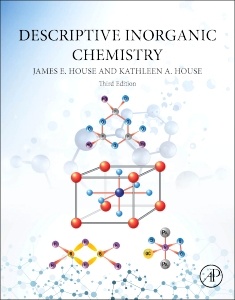Description
Descriptive Inorganic Chemistry (3rd Ed.)
Authors: House James E., House Kathleen A.
Language: English
Subjects for Descriptive Inorganic Chemistry:
146.54 €
In Print (Delivery period: 14 days).
Add to cartSupport: Print on demand
Description
/li>Contents
/li>Readership
/li>Biography
/li>Comment
/li>
House?s Descriptive Inorganic Chemistry, Third Edition, provides thoroughly updated coverage of the synthesis, reactions, and properties of elements and inorganic compounds. Ideal for the one-semester (ACS-recommended) sophomore or junior level course in descriptive inorganic chemistry, this resource offers a readable and engaging survey of the broad spectrum of topics that deal with the preparation, properties, and use of inorganic materials.
Using rich graphics to enhance content and maximize learning, the book covers the chemical behavior of the elements, acid-base chemistry, coordination chemistry, organometallic compounds, and numerous other topics to provide a coherent treatment of the field. The book pays special attention to key subjects such as chemical bonding and Buckminster Fullerenes, and includes new and expanded coverage of active areas of research, such as bioinorganic chemistry, green chemistry, redox chemistry, nanostructures, and more.
Preface1. Where It All Comes From2. Atomic Structure and Properties3. Covalent Bonding and Molecular Structure4. Ionic Bonding, Crystals, and Intermolecular Forces5. Reactions and Energy Relationships6. Acids, Bases, and Nonaqueous Solvents7. Hydrogen8 The Group IA and IIA Metals9. Boron10. Aluminum, Gallium, Indium, and Thallium11. Carbon12. Silicon, Germanium, Tin, and Lead13. Nitrogen14. Phosphorus, Arsenic, Antimony, and Bismuth15 Oxygen16. Sulfur, Selenium, and Tellurium17. Halogens18. The Noble Gases19. The Transition Metals20. Structure and Bonding In Coordination Compounds21. Synthesis and Reactions of Coordination Compounds22. Organometallic Compounds23. Inorganic Substances in Biochemical ApplicationsAppendix A Ground State Electron Configurations of AtomsAppendix B: Ionization EnergiesIndex
Undergraduate students
Kathleen A. House is an Adjunct Assistant Professor of Chemistry at Illinois Wesleyan University where she has taught for over 20 years. She received BS and MS degrees from Illinois State University and the PhD from the University of Illinois, Urbana. Her interests lie in chemical education, environmental chemistry, and inorganic chemistry.
- Highlights the Earth’s crust as the source of most inorganic compounds and explains the transformations of those compounds into useful products
- Provides a coherent treatment of the field, covering the chemical behavior of the elements, acid-base chemistry, coordination chemistry, and organometallic compounds
- Connects key topics to real world industrial applications, such as in the area of nanostructures
- Includes expanded coverage on bioinorganic chemistry, green chemistry, redox chemistry, superacids, catalysis, and other areas of recent development
These books may interest you

Inorganic Chemistry 146.54 €



